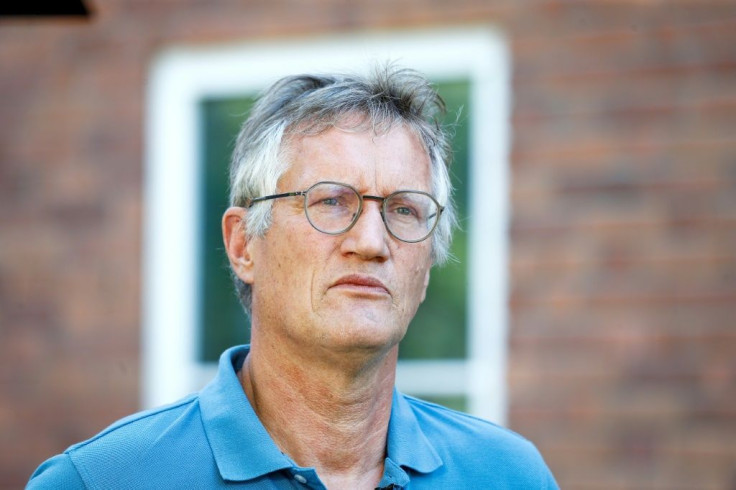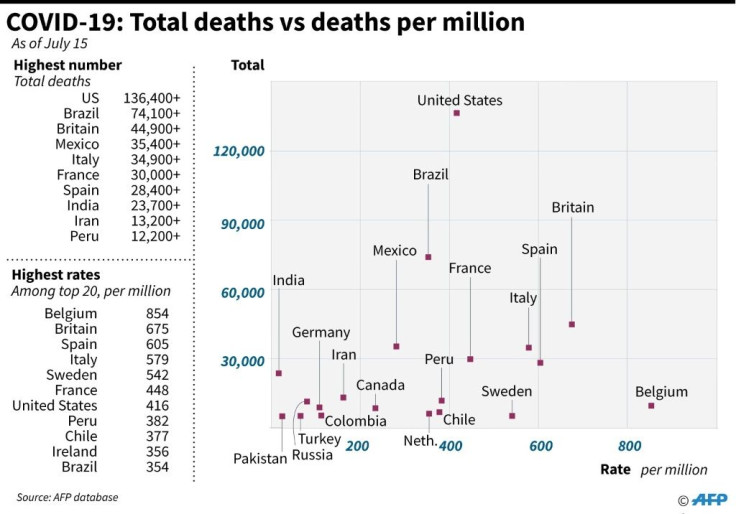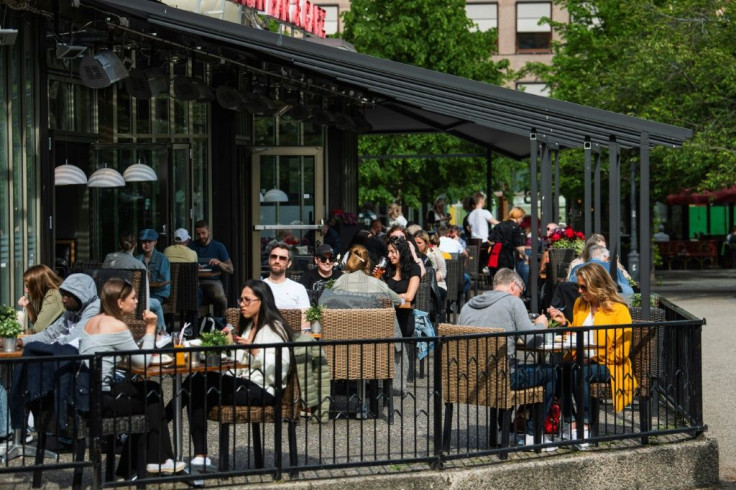Sweden Tops EU For New Cases But Says Virus Is Slowing
Sweden, whose softer approach to fighting the novel coronavirus drew global attention, has one of the EU's highest rates of new cases but authorities say the spread is slowing.
In the last two weeks, Sweden was only second to Luxembourg in the EU in terms of new cases per capita with new infections more than six times the European Union average.
Unlike most European nations, Sweden never imposed a lockdown and made headlines for its high death toll.

It has kept schools for under-16s open and has not shuttered cafes, bars, restaurants and most businesses. Masks have been recommended only for healthcare personnel.
Over the past 60 days, Sweden has seen a drastic increase in the number of new cases, but authorities stress that serious COVID-19 cases and associated deaths have declined.
"If you increase testing you will find more cases," deputy state epidemiologist Anders Wallensten told AFP.
"But the more serious cases, those who become sick and need hospital care have rather decreased," Wallensten added.

In May, Sweden was testing roughly 30,000 people a week but throughout June that was scaled up and in July the figure had more than doubled.
On May 31, the country had recorded a total of 39,160 cases. On July 16, the number had almost doubled at 76,877, but deaths had only increased by just over 20 percent to 5,593.

In late June, the rising number of cases led the World Health Organization's European branch to put Sweden on a list of 11 countries witnessing an "accelerated transmission."
But Sweden's state epidemiologist Anders Tegnell lashed out, calling it a "total misinterpretation" of data.
Sweden's Public Health Agency instead has repeatedly stressed that the large increase is mostly made up of milder cases, which would have gone unnoticed previously.

US President Donald Trump has similarly said that the surges in cases around the US are related to increased testing.
But unlike the US, the rise in cases in Sweden has not been accompanied by an increase in intensive care unit admissions.
Karin Tegmark Wisell, head of microbiology at the Public Health Agency, told AFP that the decline in serious cases is also likely a product of barrier gestures.
"People have learnt how to relate to the disease, to keep distance. We have become better at protecting the risk groups," Tegmark Wisell said.
Sweden's high mortality has often been traced to the disease hitting retirement homes. Nearly half of all Swedish COVID-19 deaths are from care homes.
Peaking at over 600 deaths a week at retirement homes alone in early April, the numbers have progressively gone down.
Emma Spak, head of healthcare at the Swedish Association of Local Authorities and Regions, said healthcare has improved after many health workers were caught off guard when the virus first struck.
"It's not only elderly care that's got better at handling COVID-19 during these months, but all healthcare," Spak said.
Swedish officials have argued that lockdowns only work temporarily and that drastic short-term measures are too ineffective to justify their impact.
Antoine Flahault, a professor of public health at the University of Geneva, said Sweden's mistake was not the no-lockdown policy but late mass testing.
"What is really sad for Sweden is that it did not combine the ambitious policy with massive testing," Flahault told AFP.
Testing milder cases, he said, allows these people to self-isolate for fear of "contaminating their families," he said.
© Copyright AFP 2024. All rights reserved.





















